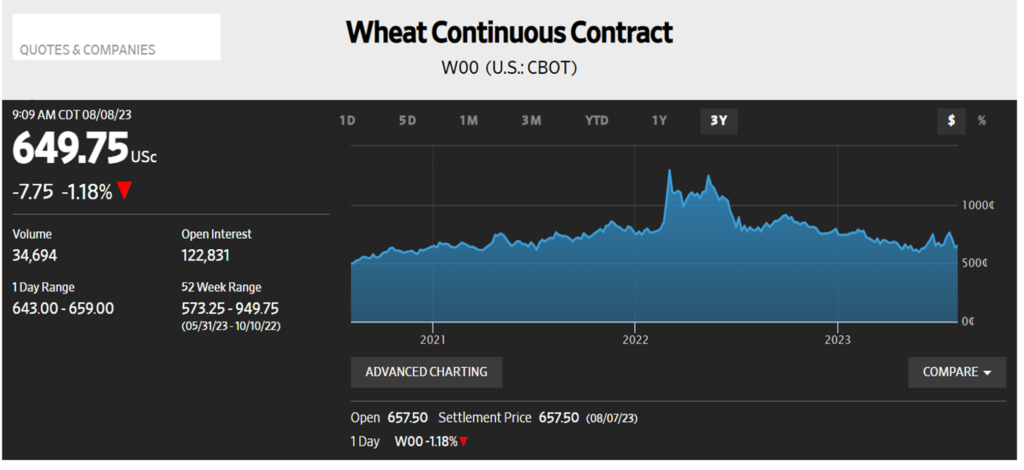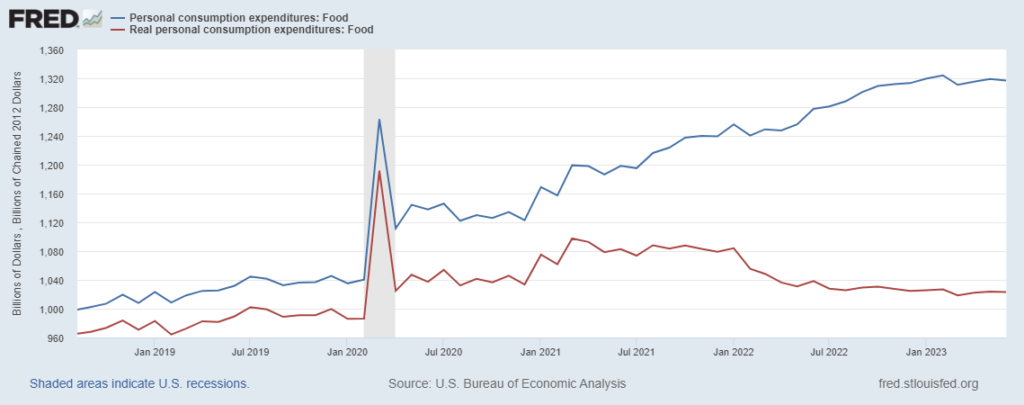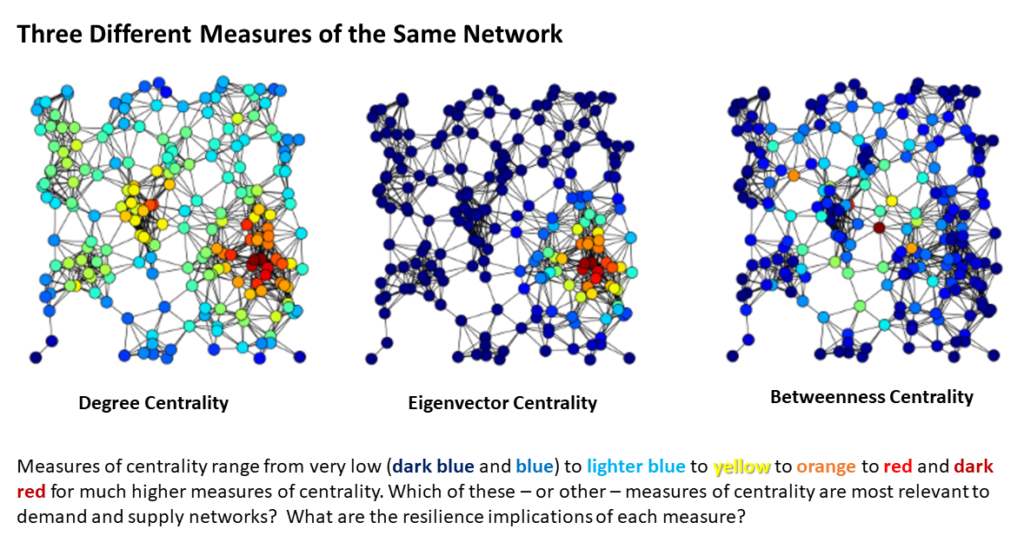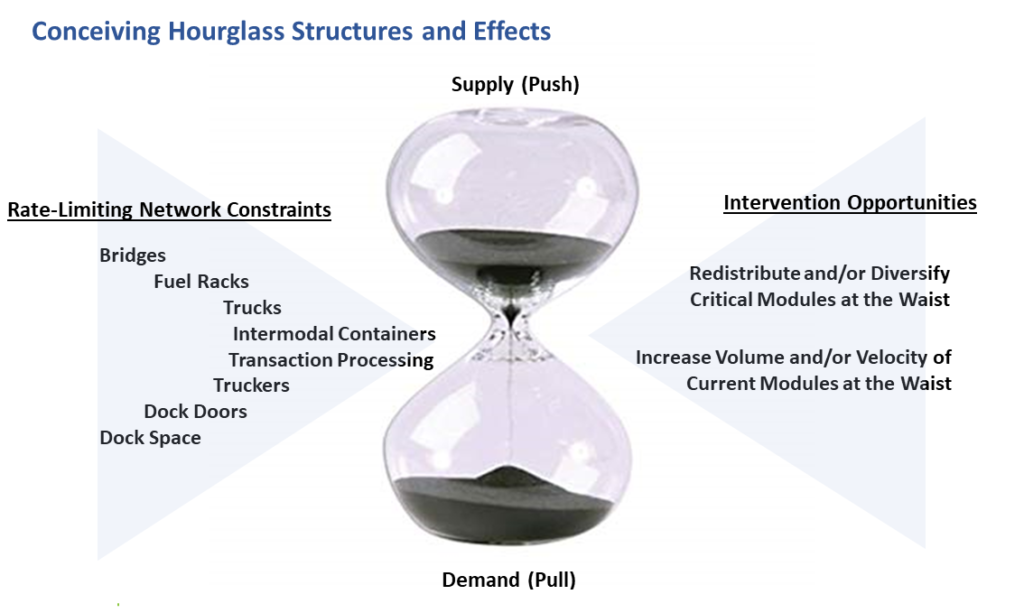Upstream and midstream flows serving Maui are operating above preexisting capacity. Downstream flows — and especially demand velocities — have been very seriously disrupted. What is needed, how much is needed, and precisely where it is needed are not yet entirely clear to downstream operators.
Upstream flows from Port of Oakland and Port of Long Beach are consistent with prior schedules. Matson and Pasha are the principal Jones Act carriers delivering groceries, medical goods, and other essentials into Honolulu. Air cargo flights into Hawaii and, specifically, into Kahului Airport on Maui have been expanded (here and here and here).
Midstream flows from Honolulu to Maui have also been consistent with or better than prior volumes and velocity. Maui is mostly supplied out of Honolulu (less than 100 miles distant, one way ferry transport usually takes 2.5 hours). Here is how Matson explains their current flow:
Matson operates a hub-and-spoke system in Hawaii, sailing mainline containerships between the U.S. West Coast and Honolulu three times a week, with connecting service to the Neighbor Islands on owned barges. It will maintain its normal schedule of barge arrivals at Kahului on Tuesdays and Fridays. The company has scheduled one extra Maui sailing, on Sunday, August 20, and is considering additional sailings to Maui should they be needed.
Young Brothers is an especially important midstream — inter-island — carrier. As early as August 9, Young Brothers explained:
The Port of Kahului is fully operational and will be accepting and delivering cargo as normal. To support relief efforts in the face of the disastrous wildfires that have impacted the communities of Maui, we will be prioritizing the loading and discharge of medical supplies and emergency and utility vehicles to the port of Kahului over the next few sailings. Young Brothers will strive to ensure that bookings for gated cargo sail on the currently scheduled sailing date(s). However, due to shifts in capacity for certain sailings, Young Brothers may re-book some cargo to the next available sailing. As a reminder, less than container load cargo is moved on a space available basis and priority will be given to cargo that support relief efforts.
Downstream flows, especially in western Maui (see maps below and here), suddenly fractured (in some places melted or were reduced to ash), consumer ability to signal demand was very constrained even as immediate demand spiked. Demand nodes — such as grocery stores and restaurants — have been destroyed. The ability to purchase supply has been reduced by loss of these nodes, unreliable cell networks, and loss of related digital transaction networks. Most housing in Lahaina (population: @ 13,000) is estimated to be a total loss, including the loss of residential food stocks (see second map below). Most supply channels have survived, but localized scope and scale were sparse even before this disaster and perimeter controls remain in place. The local public water system is mostly intact, but in the hardest hit locations water is considered unsafe to drink. Grid power remains unavailable to roughly 5000 customers in Maui County. Cell coverage is beginning to recover.
The flow networks supplying Maui’s demand were not seriously impacted by the August 8 and subsequent wildfires. These flow networks have flexed in response to devastating local losses. But western Maui, in particular, is on the far outer edge of high volume, high velocity demand and supply networks. In the case of no-notice or fast-onset major disasters, local demand will often be separated from outside flow for 72 hours or longer. Local demand is usually displaced and discombobulated. Local supply nodes are often disrupted or destroyed. Reconnecting network supply with local demand is delayed by lack of communication, loss of essential infrastructure, and many other factors. Utter destruction of the built environment, as in Lahaina, will extend this isolation period… especially where preexisting flows were already peripheral.
Initial response, inside this 72 hour window, is most likely to spontaneously emerge from immediately proximate and less-systematic behavior where survivors directly help survivors (more and more). The more physically isolated the disaster locale, the more time-extended this period of initial response. The more proximate the impact zone to a comparatively unscathed concentration of supply, the more quickly network capacity can be recovered and deployed. None of this is surprising. All of this has been empirically demonstrated and confirmed for over seventy years (one classic example here).
The recurrent reality of this delay is not comforting to survivors. Many disaster response professionals (both private and public) work hard to reduce this delay. But physical limitations of distance, time, capacity, and interdependencies can be very stubborn. More comforting is the “cornucopia” of supply that typically emerges in the extended aftermath of the isolation period… at least where and when effectual demand persists and preexisting network capacity has also survived.
[On August 25 a new post updated the status of recovery for Maui.]








